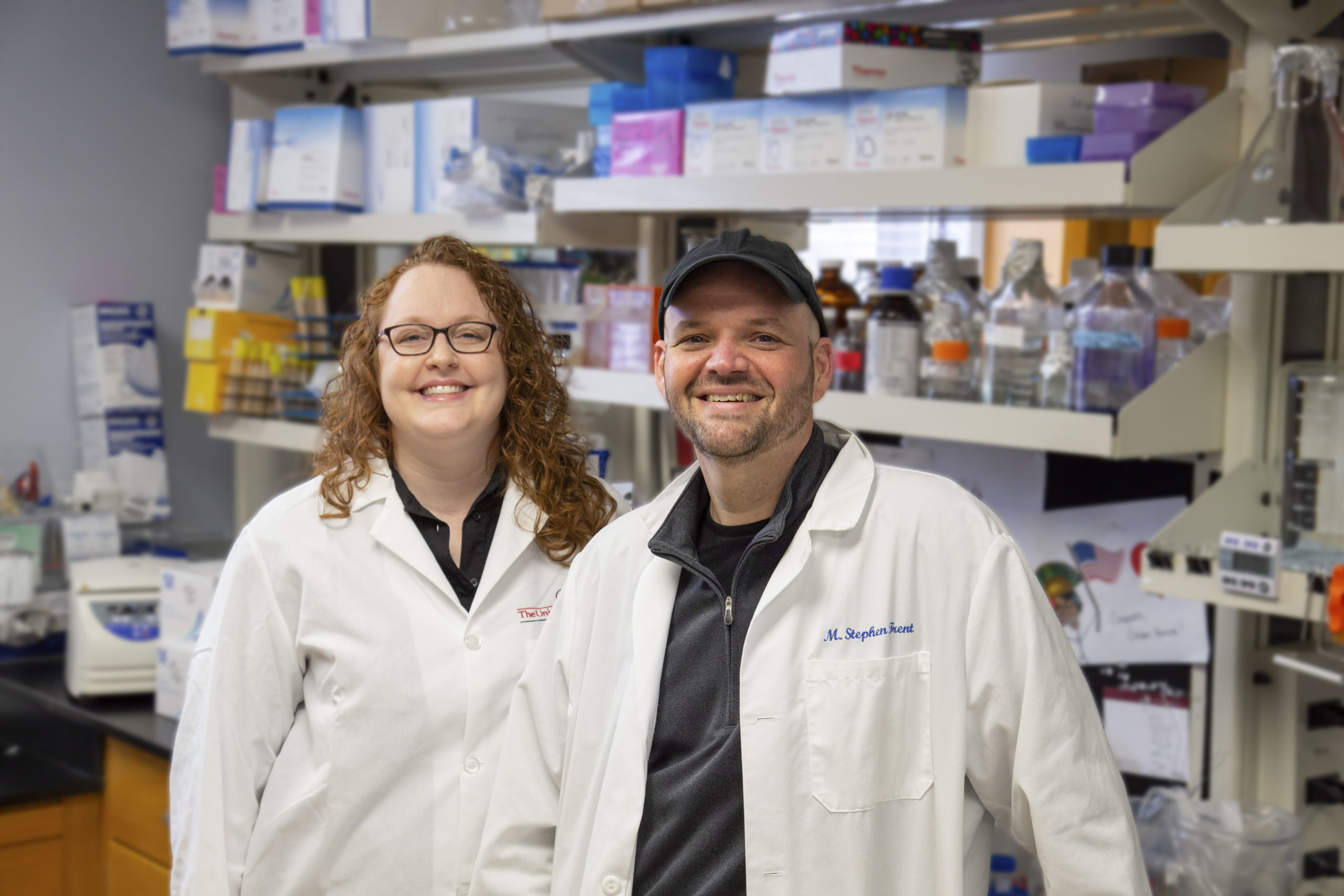A team of researchers led by Stephen Trent, professor of infectious diseases and UGA Foundation Distinguished Professor recently identified five compounds capable of boosting the effects of common last-resort antibiotics against treatment-resistant, Gram-negative bacteria. These compounds were also successful in lowering the dose of antibiotics necessary to facilitate bactericidal effects, reducing the risk of harmful side effects in patients. Four of the compounds were also effective against Gram-positive bacteria including methicillin-resistant Staphylococcus aureus (MRSA).
The report, titled “A Whole-Cell Screen Identifies Small Bioactives That Synergize with Polymyxin and Exhibit Antimicrobial Activities against Multidrug-Resistant Bacteria,” was published in Antimicrobial Agents and Chemotherapy.
The modern world is much smaller than it once seemed. As the world shrinks, ironically, so do its largest threats; it’s possible that our worst enemies are only a few micrometers in length: antibiotic-resistant bacteria. But how did this start? That requires a short history lesson.
In 1928, a Scottish scientist named Alexander Fleming went on vacation while studying the properties of various Staphylococcus species, and he left his office in a bit of a mess. When he returned, he found that some of his cultures had been contaminated with a fungus that seemed to kill any bacteria in its immediate area. This might have ruined his experiment, but it meant he had discovered something completely new. This fungus, a type of Penicillium, became the basis for the world’s first antibiotic, penicillin, and began humanity’s war against bacteria.
But bacteria, like us, prefer not to be killed, so they began to mount defenses against these compounds. Over time, their defenses have grown and expanded to protect them from a number of antibiotics, and without a way to treat them, mild diseases can become life threatening.
“Antibiotic resistance is a growing problem,” explains Dr. Shawn Zimmerman, postdoctoral fellow and first author on the report. “Research indicates that drug-resistant infections could cause more than 10 million deaths per year by 2050. That’s more than cancer kills today.”
In their 2019 report, the CDC estimated 2.8 million infections and 35,900 deaths associated with antibiotic-resistant bacteria in the United States per year. As bacteria become resistant to more antibiotic compounds, healthcare providers are forced to use last-resort medications. One such class of antibiotics is known as polymyxins—polymyxin B (PMB) and polymyxin E (colistin) are the most commonly used. However, due to extensive use of colistin in animal production outside the US, bacteria have begun to develop and share defenses against these important drugs.
The first colistin-resistant bacteria appeared in the 1980s, but it was not until 2015 that scientists found the gene that causes it, mcr-1. And it had already spread to five continents. This gene is carried by a plasmid: a small, circular string of DNA that replicates independently of a bacterium’s chromosomal DNA. Like humans, “parent” bacteria pass genes on to “children,” but they can also share their genetic material with other bacteria. They don’t have to wait for the next generation. And the bacteria receiving the new gene do not always need to be related—or even the same species. The spread of mcr-1 has created a dire need for either new antibiotics or adjuvants, compounds that can support antibiotics and boost their effectiveness.
Colistin and polymyxin B are last-resort antibiotics because they can be toxic to the liver and kidneys, but they are highly effective against Gram-negative bacteria. Unlike other types of bacteria, Gram-negative bacteria have an extra level of defense: a secondary membrane around the bacterium designed to keep it safe from invaders. Polymyxins break through the outer membrane allowing entry into the organism’s interior where it can be destroyed. The mcr-1 mechanism allows the outer membrane to fortify its defenses against threats, rendering treatment with polymyxins completely ineffective.
The compounds identified by Trent and his team work with PMB, boosting its effectiveness to destroy Gram-negative bacteria. While more research will be necessary to determine the exact mechanism, it appears that the compounds act in tandem with PMB to destroy resistant bacteria—either with PMB promoting activity of the compounds or forcing entry through the outer membrane. These compounds also decreased the amount of PMB needed to treat the infection, which can limit liver and kidney damage related to higher polymyxin concentrations. Four of the five compounds were successful at killing Gram-positive bacteria without an adjuvant compound.
“We are optimistic that with further investigation and optimization, these compounds could enhance our ability to combat these bacteria,” said Trent. “We hope that these compounds can reinvigorate polymyxin use and inspire new treatments against antibiotic-resistant bacteria in the future.”
